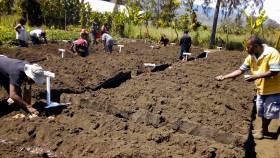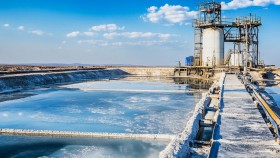How green is China’s post-COVID-19 ‘new infrastructure’ stimulus spending?
5 May 2020
Governments around the world are considering how to revitalise their economies post-COVID-19. China’s plans for ‘new infrastructure’ construction projects could help deliver low-carbon economic stimulus. But spending plans at this point are small, and money continues to be poured into high-emissions ‘old’ infrastructure projects.
In response to the global financial crisis (GFC), China created a 4 trillion RMB (US$566 billion) stimulus package in 2009–10, covering 10 programs including affordable housing, highways, bridges and airports. The boost to traditional infrastructure sharply increased the consumption of cement and steel, resulting in higher carbon dioxide emissions and severe air pollution.
This time, a new buzzword has emerged — ‘new infrastructure construction’. The Politburo Standing Committee, which sets headline economic and political strategy, held a meeting on COVID-19 control measures in March 2020, envisioning that the route to economic recovery would be through accelerated investment in such ‘new infrastructure’ projects.
This ‘new infrastructure’ concept started as a list of information and communication technologies, but has since been expanded to include low-carbon transport and energy. It covers investment in seven fields: 5G networks, data centres, artificial intelligence, the industrial Internet of Things, ultra-high voltage (UHV) power transmission, high-speed rail and electric vehicle charging infrastructure.
The total investment anticipated for these seven fields is 10 trillion RMB (US$1.4 trillion) for the six-year period from 2020–25, easily allowing for a low-carbon stimulus package comparable in size to the one following the GFC. The suggested ‘accelerated investment’ means that these investments could be brought forward as part of a stimulus package to achieve the policy goals for these seven fields by 2025.
But the suggestion to accelerate the investment has not been backed up by central government spending yet, possibly because Beijing’s coffers are not nearly as full as they were when the GFC hit. Much of the investment will have to come from provincial level governments and by encouraging lending.
Updated: 6 May 2020/Responsible Officer: College of Science/Page Contact: https://iceds.anu.edu.au/contact
















